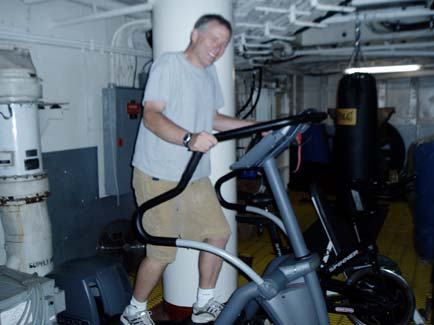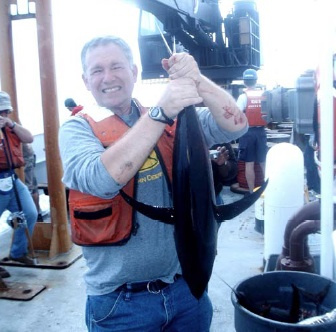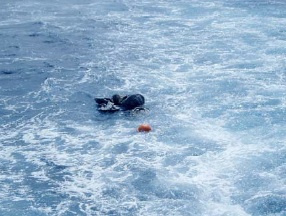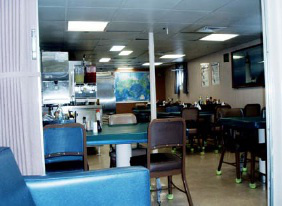NOAA Teacher at Sea
Robert Oddo
Onboard NOAA Ship Ronald H. Brown
July 11 – August 10, 2009
Mission: PIRATA (Prediction and Research Moored Array in the Atlantic)
Geographical area of cruise: Tropical Atlantic
Date: August 10, 2009
Weather Data from the Bridge
Outside Temperature 28.21oC
Relative Humidity 78.32%
Sea Surface Temperature 27.62oC
Barometric Pressure 1019.42 inches
Latitude 23 41.483 N Longitude 80 40.363 W
Personal Log
I just finished watching my last sunset on the Ronald Brown and it is time that I reflect a little on this entire NOAA Teacher at Sea experience. The cruise gave me a first-hand look at some of the important work that atmospheric scientists and physical oceanographers examine. I discovered that the ocean system is huge and scientists around the world are compiling information about the ocean so we can better understand it. This work is like putting one of those big 1000 piece jigsaw puzzles together. The more pieces that you are able to put together, the better you understand how the pieces fit into the entire picture. Also because the system is so large, it takes the collaborative effort of many different scientists to really get some sort of understanding about what is happening. This cruise would never have been possible without the crew, the scientist and the NOAA Corp officers working as a team. There was science happening 24 hours and everyone did his or her part.
I feel particularly lucky to be selected as the Teacher at Sea on this cruise and I would like to thank everyone that made it possible. The crew, the scientists, the NOAA Corp officers were friendly, helpful and always willing to explain things about the ships operation and the science that was happening on the ship. Thank you to the Teacher at Sea support staff that helped with logistics and information pertaining to the cruise. Special thanks go to than Dr. Rick Lumpkin, the chief scientist, for coordinating the cruise, explaining the science, and reviewing sea logs and Field Operations Officer, Nicole Manning for reviewing sea logs and coordinating things.
Finally thank you to all the people that followed along with this adventure. It was always nice to see how many people were viewing the journal and photos. The questions were great and thanks for all the emails. The impacts that these experiences have on teachers and their students have implications that are far reaching. This has really been a special summer for me and thank you to everyone that made it possible.



























